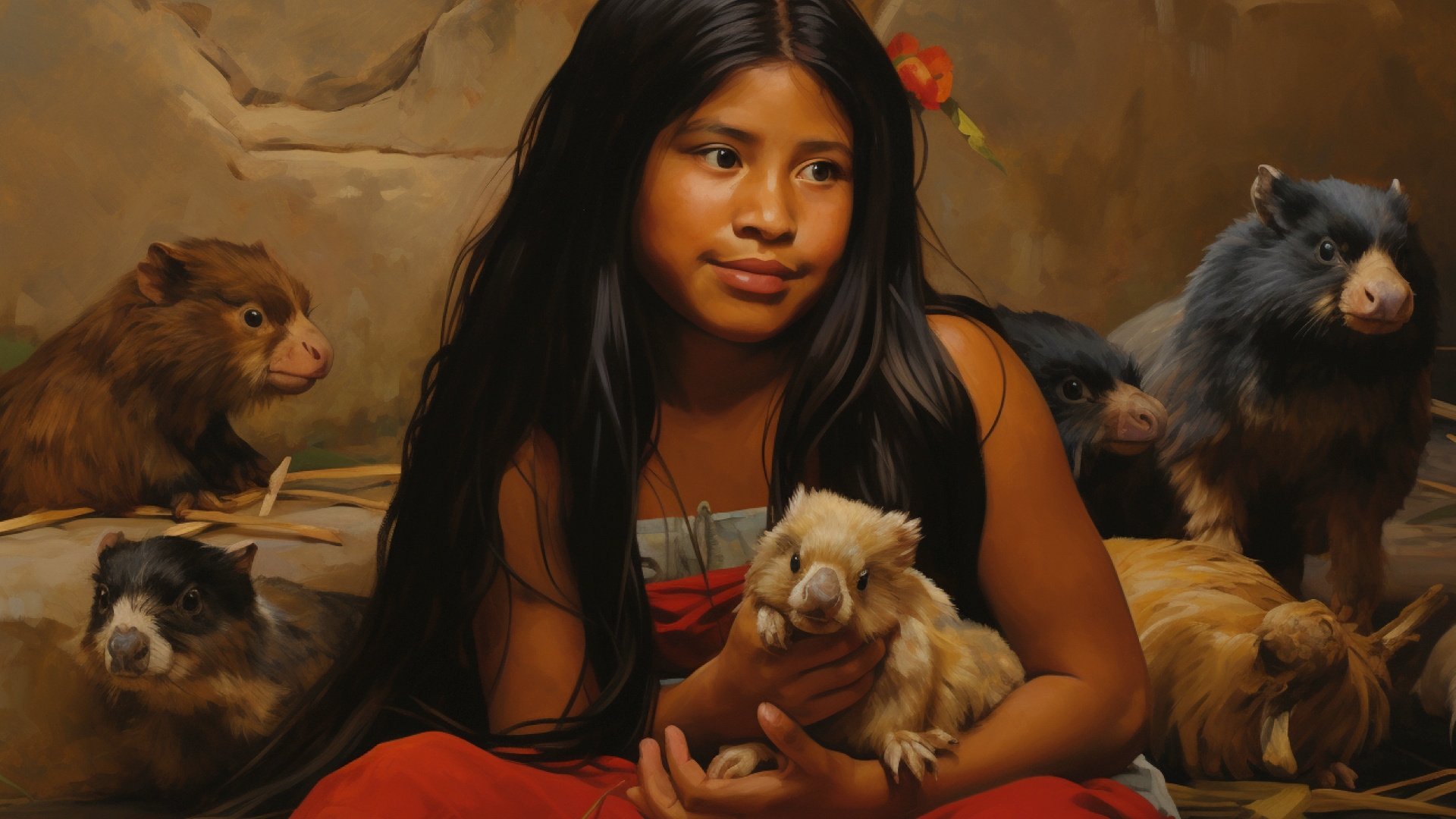From the Andes to Our Homes: The History of Guinea Pigs:
Summary:
This captivating journey through history traces the path of guinea pigs from their ancient Andean origins to their beloved status as household pets today. Originating in the Andes Mountains, these creatures were revered in ancient South American cultures, often depicted in art and used in rituals. Their voyage from South America to Europe in the 16th century marked the beginning of their global journey, where they became exotic pets among European nobility. Today, with a variety of breeds and a significant role in scientific research, guinea pigs continue to capture hearts around the world. This article delves into the rich and fascinating history of these gentle and affectionate animals, highlighting their cultural impact and the responsibilities of modern-day ownership.


- The Guinea Pig in Ancient South American Culture
- The Journey from South America to Europe
- Guinea Pigs as Exotic Pets in European Courts
- The Evolution of Guinea Pig Breeds
- Guinea Pigs in Modern Research
- The Rise of the Guinea Pig as a Popular Pet
- The Cultural Impact of Guinea Pigs Today
From the high-altitude terrains of the Andes Mountains to the cozy living rooms of homes around the world, the guinea pig has journeyed far and wide. These small, charismatic creatures, known for their gentle and affectionate nature, have a history as rich and varied as the many breeds we know today. In this article, we will embark on a historical journey, tracing the path of guinea pigs from their ancient Andean origins to their status as beloved pets in our modern world.
Guinea pigs, or cuy as they are known in their native region, were domesticated as far back as 5000 BCE in the Andean region of South America. These animals were not only a source of food but were also revered in the indigenous cultures of the Inca Empire. They were often depicted in the art of Moche people of ancient Peru, and their presence was considered to bring good health and fortune. In some regions, they were used in traditional healing rituals, believed to have the power to diagnose and cure illnesses.
The journey of the guinea pig from South America to Europe is a tale of exploration and curiosity. When Spanish explorers arrived in the New World in the 16th century, they were fascinated by these small, gentle creatures. Guinea pigs were brought back to Europe by traders and explorers as exotic novelties. Despite the long and perilous journey across the Atlantic, these resilient animals survived and soon began to captivate people in their new European home.
In Europe, guinea pigs quickly became a symbol of exotic luxury and were often kept as pets by the nobility. Queen Elizabeth I of England is said to have been gifted a guinea pig, which was a testament to their status as pets of the elite. Paintings from the 16th century depict guinea pigs, showcasing their esteemed position in society. They were cherished for their gentle demeanor and easy care, making them ideal companions in the royal courts.
As guinea pigs spread across Europe and later to North America, selective breeding led to the development of various breeds, each with its unique coat color, texture, and pattern. From the long, flowing hair of the Peruvian guinea pig to the distinctive rosettes of the Abyssinian, the diversity among guinea pig breeds is a testament to their enduring appeal. Today, there are more than a dozen recognized breeds, each beloved for its unique characteristics.
In the 20th century, guinea pigs gained prominence in another arena: scientific research. Due to their gentle nature and physiological similarities to humans, they became important animals in medical research. They played a crucial role in the development of antibiotics, the study of nutrition, and other medical breakthroughs. The term "guinea pig" has even entered our language as a metaphor for someone being tested or experimented upon, reflecting their significant role in science.
Today, guinea pigs are among the most popular pets in the world. Their gentle and affectionate nature, coupled with their relatively easy care, makes them ideal pets for families, singles, and seniors alike. They are social animals that thrive on interaction, and their charming personalities can bring joy and companionship to any home. The commitment of dedicated breeders and the work of guinea pig rescue organizations have also contributed to their widespread popularity.
In contemporary society, guinea pigs hold a special place in our hearts and our culture. They are celebrated in various ways around the world, from the traditional cuy festivals in Peru to being beloved pets in households globally. In pop culture, they appear in movies, books, and as adorable internet memes. Their impact extends beyond just being pets; they are part of our shared cultural fabric, symbols of comfort, and joy.
As we have journeyed through time, from the ancient Andes to contemporary homes, it is clear that guinea pigs have been cherished companions for thousands of years. Today, as we hold these gentle creatures in our arms, we are part of a long and storied history. They are more than just pets; they are a link to ancient cultures, a testament to the bonds that humans can form with animals, and a reminder of the joy and comfort that pets bring into our lives.


